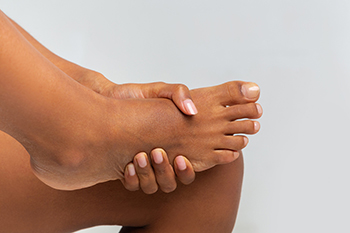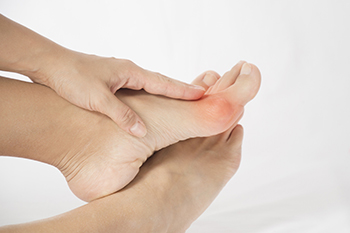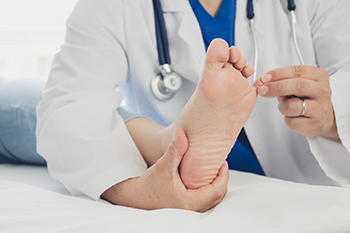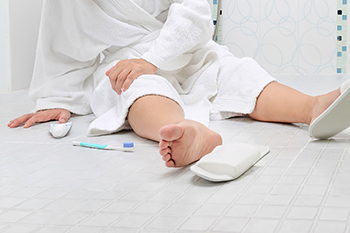
Tired and achy feet, while not a medical condition in and of itself, often result from overworked foot muscles. Our feet endure substantial pressure and movement, causing fatigue. This sensation can affect daily activities and slow us down. Various factors contribute to tired and achy feet. Overuse, such as prolonged standing or walking, is a significant cause. Inadequate footwear, especially lacking arch support and cushioning, can lead to foot discomfort. Walking on hard surfaces, high or fallen arches, excess weight, and foot conditions like heel spurs or plantar fasciitis can intensify these feelings. Relief and prevention of tired and achy feet can include rest, foot soaks, massage, stretching and strengthening exercises, and wearing shoes with adequate arch support and shock absorption with insoles or orthotics. If you have tired, achy feet, it is suggested that you make an appointment with a chiropodist to see if the underlying cause can be identified and treated.
Foot pain is a common problem treated by chiropodists. If you have foot pain, please consult with one of the chiropodists from The Footcare Centre. Our chiropodists can help you maintain the health of your lower limbs and your mobility.
When you are experiencing foot pain, it’s important to note the type of pain and its location, as this can help determine a diagnosis.
Pain in the top of the foot may be caused by:
Stress fractures
Sinus tarsi syndrome
Extensor tendonitis
Tibialis anterior tendonitis
Gout
Athlete’s foot
Ganglion cysts
Pain in the bottom of the foot may be caused by:
Plantar fasciitis
Foot cramps
Tarsal tunnel syndrome
Plantar fibromatosis
Posterior tibial tendonitis
Stress fractures
Flat feet
Pain on the side of the foot may be caused by:
Ankle sprain
Cuboid syndrome
Peroneal tendonitis
Stress fractures
Bunions
Corns or calluses
Posterior tibial tendonitis
Heel pain may be caused by:
Plantar fasciitis
Achilles tendonitis
Bone spurs
Heel fractures
Retrocalcaneal bursitis
Sever’s disease
Pain in the toes may be caused by:
Gout
Hammertoe
Turf toe
Bunions
Ingrown toenails
Blisters
Arthritis
These and many more conditions can be treated by a chiropodist. If you have any questions, please feel free to contact our office located in . We offer the newest diagnostic and treatment technologies for all your foot care needs.





